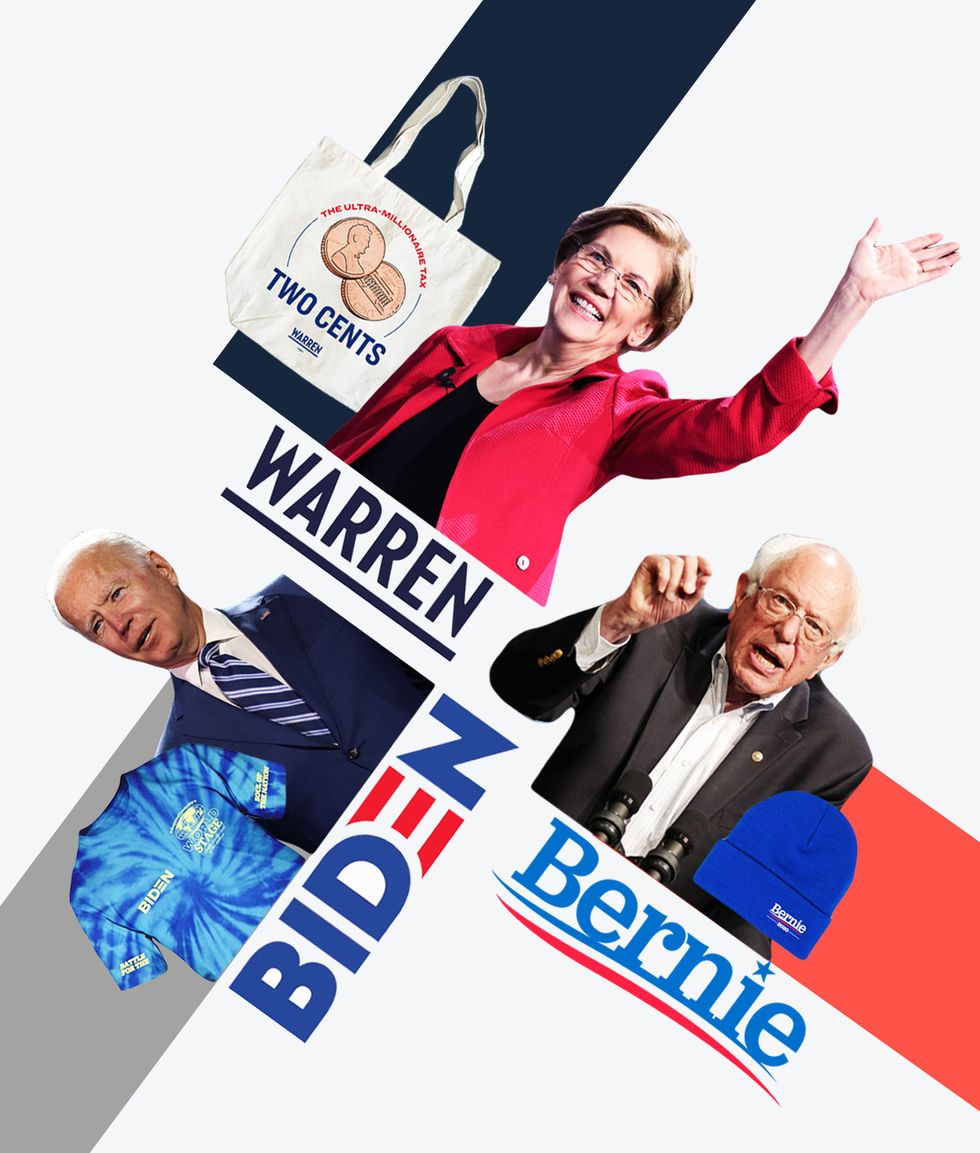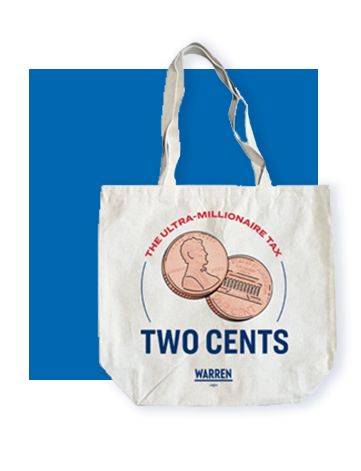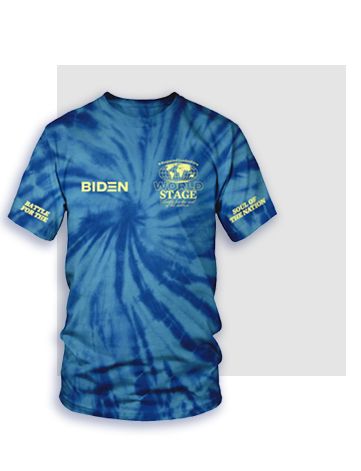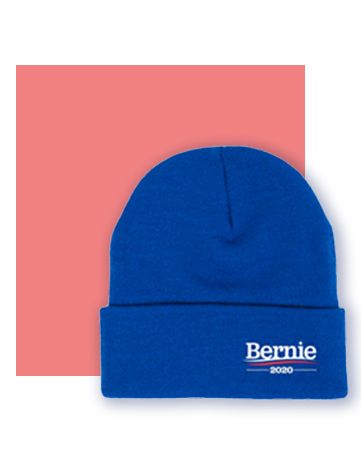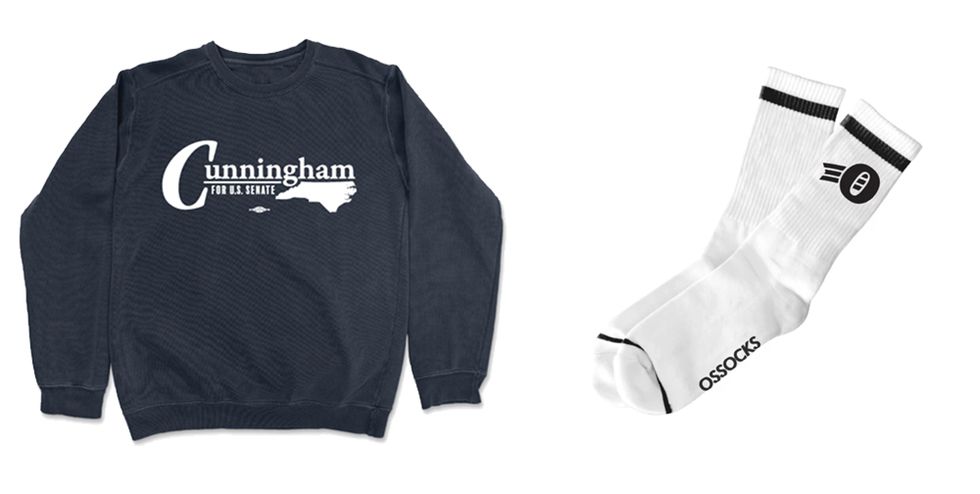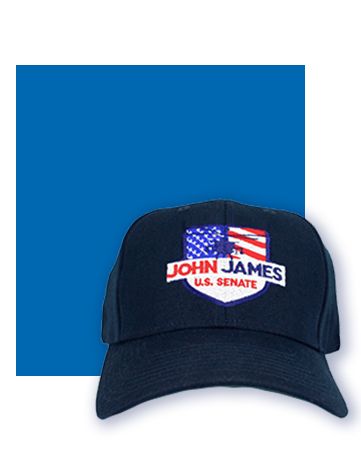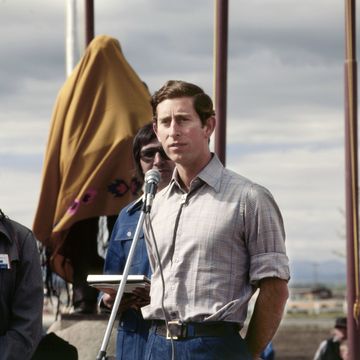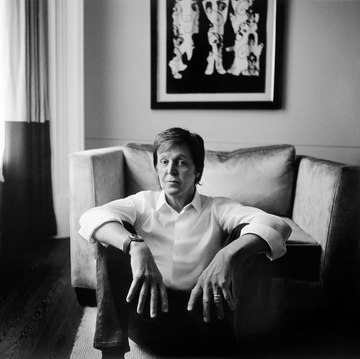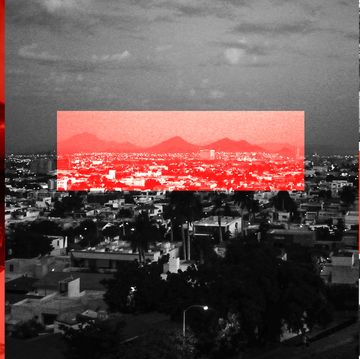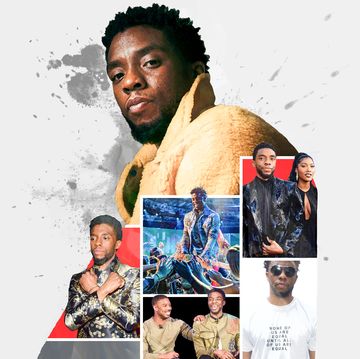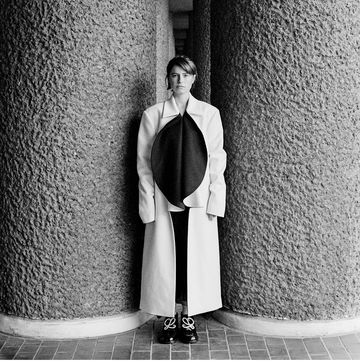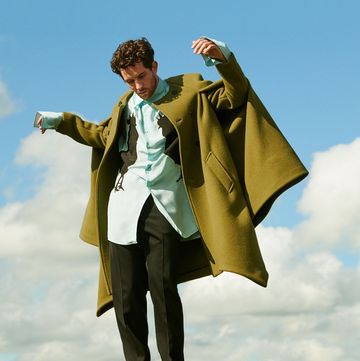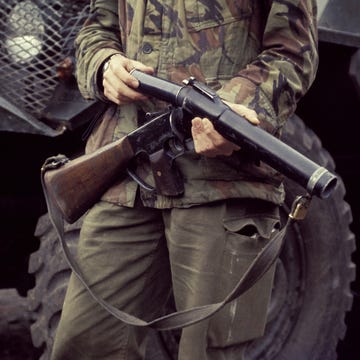It was a really great tote: off-white, canvas, large enough to stow a sizeable cache of millennial staples, like chipotle paste, and coconut water, and, yes, avocados. To the side, a large illustration of two cents, drawn in careful but heavy felt tip-esque lines, something that could naturally sit within the pop art prep of Rowing Blazers, or as part of an imaginary Patagonia crossover with the Federal Reserve. Except it belonged to neither. It was from Elizabeth Warren's presidential campaign, a solid piece of merch that adroitly communicated her marquee 'two cents wealth tax' proposal, and which proved highly wearable too. Economic populism goes End Clothing.
Warren's tote bag wasn't a one-off. Political merch has never been so popular. The populace has never been more political. But where the T-shirts and bumper stickers and badges of yore stuck to a traditional format – candidate name up top, running mate below, forged in the colours of the star spangled banner – today, iconic campaign design has become an essential tool in the race for the White House. And no, it didn't begin with those blood red trucker caps.
"Obama 2008 was something of a game changer," says Ben Ostrower, founder and creative director at Wide Eye, a design agency that's worked on branding, design and digital products for Bernie Sanders, Hillary Clinton and current vice presidential candidate Kamala Harris. "The entire design was constructed and packaged like a corporate brand, I'd argue in a good way. The Obama 'O' logo and the consistency of the campaign design conveyed a feeling of trust and competence, and it inspired a lot of people – myself included – to affiliate themselves with what Obama was selling." Indeed, the 'O' logo, with its rolling hills of red and a rising sun among a true blue sky, captured in a graphic the core message of the former president's campaign: hope. A new dawn. A new kind of president. Which, understandably, may seem slightly obvious (and slightly hammy) for non-Americans. For Ostrower, this approach is essential. "I really don't mean for this to sound cynical, but a generation raised on Coke versus Pepsi pride themselves on knowing and owning the coolest brands. Obama fit right in and felt familiar and cool."
It wasn't the only reason Obama won. Bur nor was it immaterial: he notched his first win as an underdog in the Democratic primaries (a drawn out, complex voting system in which a party selects its presidential candidate) and then in the general – twice. Since then, a recognisable logo has become even more important, outgrowing the four corners of a yard sign and relocating onto the digital plot of a smartphone. "With the rise of social media and the concept of personal branding, the conversation around how politicians and leaders represent themselves has exploded," says Ostrower. "Everyone these days is a branding expert and everyone has an opinion. People love to dissect the brand and communications strategies of people on Instagram, YouTubers, so it squares completely that we'd do the same for candidates. It used to just be television, posters, and signs. Now it's a dozen different social media platforms, merchandise, video of every kind, and even video games.
Making the job harder still is catering to a population that's becoming increasingly diverse – and polarised. "Campaigns have a wide audience: all of America," says Ida Woldemichael, associate creative director at Wide Eye and a former designer for Clinton's 2016 presidential run. "Merch cements the campaign into history via traditional products, but you also have to respond to moments by rapidly creating and selling things." Woldemichael points to a recent release from the Biden camp – the 'truth over flies' swatter – as an example of an effective and rapid response to the daily drama of a presidential campaign. It referred to the moment in which a fly parked itself on Mike Pence's head during a heated exchange in the vice presidential debates. "There has to be something for everyone, and every moment, and a logo that is simple and concise is ideal."
The Democratic coalition is a broad one, and expanding if the polls are to be believed. It encompasses a majority of African-Americans, Latinx people, younger voters, university-educated whites and a growing number of suburban women. Uniting this coalition in design is difficult. Which is why the best campaign merch – the legitimately cool stuff – is seemingly geared towards the very people who would wear it, the people in-tune with trends and clothes that feel current.
Andrew Yang, an entrepreneur and long shot candidate for the Democratic nomination, solidified a small but not unremarkable following – the self-titled Yang Gang – based around a single slogan: Make America Think Harder, more commonly abbreviated to 'Math'. This appeared on caps, hoodies and T-shirts, as an acronym that illustrated Yang as a kinder, progressive candidate who touted a basic universal income as his flagship policy. It was a foil to the fire and brimstone of the Trump administration. That simple word, 'Math', recalled blue skies fiscal thinking but also security, arguing that the numbers for such a bold proposition did indeed add up. Biden's campaign, arguably seen as the most traditional with its yearning for yesteryear and better times, released a punchy merch line with fashion heavyweights proper: Thom Browne, Prabal Gurung, Victor Glemaud and Joe Perez, formerly of Kanye West's Donda Collective. The trophy piece, designed by the latter, was a concert-style tie-dye T-shirt. It has almost sold out.
It's proof that good political branding can plug into the zeitgeist. These campaigns aren't just honing in on one particular trend either. Instead, they're flirting with all camps of fashion at large. There's the nerdcore of Yang and the unexpectedly left-field merch of Biden, but in Bernie Sanders, there's a progressive moment buoyed by millions of young voters. You'll see more than a few Bernie beanies and bags and sweatshirts in Brooklyn. And they have their own aesthetic too: wholesome workwear, but in the age of streetwear. They are visible, fun and almost always in a pop of cobalt – a natural and literal representation of the blue collar pro-worker torch that has been carried by a brand new movement.
This was always the intention says Ostrower, whose agency designed the now iconic Bernie logo. "We wanted to convey movement, both in a figurative and literal sense. And we wanted Bernie, despite his seemingly out-of-the-norm politics (at the time), to be wholesome and wholly American" – an important factor when trying to woo an electorate that is still passionate about its patriotic duty. When asked why and how the design lends itself so well to merch, Ostrower believes that its success lies in believability. "If people think that, then I'd offer that's just because it feels authentic to Bernie. The logo itself isn't a clean, crisp, polished shape. Bernie isn't a clean, crisp, polished candidate. The logo is a little bit rough around the edges, but it reads as warm and compassionate."
Though largely seen as the sole progressive candidate in his 2016 match-up with Mrs Clinton, Warren too came from a similar ideological place to Sanders in 2020 – and her merch was just as popular during her own presidential run. Brooklyn-based company FCTRY released an action figure of the Massachusetts senator, telling Politico that she was "the most popular product on [the] online store". Again, there was a low key workwear element to the merch too, though it was somewhat subtler than that of the Sanders campaign. Long sleeved T-shirts were simple, navy, almost Dickies-like with a single 'Warren' slogan underlined in liberty green. Bags, much like the hi-vis graphics of the 'two cents' tote, were uncluttered, again stamped in big bold slogans that could instantly be tied to the senator's policy-heavy campaign: 'impolite arrogant women make history' reads one; another simply repeats the word 'persist' in colours of the LGTBQ+ flag – a rebuke to an episode in which Warren was silenced by a senior politician on the Senate floor who argued that "nevertheless, she persisted" when ordered to end her speech.
This simple, no-nonsense approach to merch, again, was a key pillar of the campaign. Like Sanders's outsider message, Warren bases her brand around one key idea: she has plans. Lots of them. "Elizabeth Warren is someone who has deeply held views about how to fix our country, so she always leads with ideas," says Melanie Garunay, former director of creative and content on the presidential campaign. "She explains those ideas clearly and grounds them in real, human stories. So we had to ask ourselves: are we explaining problems in the simplest way possible? And are we offering a solution in a way that makes people feel like it can get done? Those questions drove our entire content strategy, whether we were rolling out a new plan, writing a tweet, or adding a new item to our campaign merch store."
What's more, Warren's team quite literally answered to the people. "Often, an idea or request would come to us from supporters, or we'd see interest online after a debate or an event," says Raquel Breternitz, the campaign's design director. "This brought us the 'Billionaire Tears' mug, which we released after Leon Cooperman teared up when discussing Warren's plans to tax the ultra-wealthy, or one of my favourites, the 'Enough is Never Enough' shirt that we released after [she] took Mike Bloomberg to task for his mistreatment of women." The transformation from professor populist into big merch label was part of the overall strategy too. "We wanted to be just as beautiful, just as fun to wear as a consumer brand. A great campaign shirt is no longer relegated to a rally, where only other supporters see you as one of them: it goes with you to your day-to-day, where it can spark conversations about things you care about and give you the opportunity to persuade someone about your candidate without being quite so obvious. And if you see a really awesome hat, maybe contributing some money to our cause becomes more worthwhile to you. Or maybe you just buy it because it's a cool hat."
Both Sanders and Warren were ultimately unsuccessful in their respective bids for the nomination. The ideas live on, though. Their merch is still worn. An Instagram search for one of the many campaign slogans unearths an endless grid of younger Americans in 'persist' T-shirts and Bernie hoodies in all-American blue. The message is clear: their message isn't going anywhere.
The focus on merch isn't just a feature at the presidential level; there's been a trickle down of which Reagan would be proud. In a contentious Senate race in North Carolina, Democratic candidate Cal Cunningham released a series of folksy 'aw shucks' sweatshirts, pocketed tees and long-sleeved T-shirts – a reflection of the rural demographics of the state, and also one of the Carhartt archives with its farm-adjacent roots. Jon Ossoff, a documentarian with sights on a Senate seat in Georgia, has also doubled-down on effective merch: very, very familiar 'O' logo white socks are sold out, while more long sleeved T-shirts are subtle enough to edge into everyday outfits, but still demonstrative enough to tout its political pedigree. This brand building seems to be of sound, solid construction, too: Cunningham has maintained a steady lead in the polls, while Ossoff is neck-and-neck with his competitor in a once ruby red Republican state.
Democrats don't have a monopoly on effective branding, though. While many liberals are repulsed by MAGA caps, flags and single-use plastic straws deliberately designed to goad, it uniforms and unites the president's supporters. It's also abetted the transformation of the Republican party into Trump's party: the bright red of the American right is the base colour of the MAGA movement. They are almost indistinguishable from one another these days.
Elsewhere, however, Republican candidates who have distanced themselves from the president have retailed products that are more in-step with the cooler, less divisive merch of Trump. John James, a 39-year-old former serviceman who is seeking to oust one of Michigan's sitting Democratic senators, released merch that, intentionally or otherwise, could be easily be a dish on the current menu for colourful, hi-graphic sportswear – or prep 2.0 as its known within menswear circles. Where Trump's caps are shaded in the brightest hue of SOS red, James' goes navy, with a colourful badge of clean lines, the silhouette of a well-armed Apache helicopter visible against the backdrop of the US flag. Supporters are 'co-pilots'. In one fell swoop, we have a name, a personality, a history; all encompassed in a multipurpose logo that works just as well on Eurohiker fleeces and military-geared sweatshirts. The candidate's politics may be out of step with a majority of younger voters, but the merch chimes with that of the wearable, fresh ephemera of progressive rivals. The John James campaign did not respond to requests for comment on this article.
When asked if campaign merch was purposefully designed to attract the youth vote, Breternitz replies: "Yes and no". That Warren and Bernie's merch found success with younger voters is likely a byproduct of their bases, which, unsurprisingly, are largely comprised of younger, university-educated voters. But figures from across the left-right spectrum are leaning into the concept of merch with every passing election cycle. It is more considered. It feels legitimate. Initially, Biden struggled with younger voters as the establishment, centrist candidate, his campaign's outreach seen as another "how do you do, fellow kids?" meme that once beleaguered Mrs Clinton. But the tall task of merch design has been handed from those with no clue to those who set fashion's temperature – people like Thom Browne and Tom Perez. The result is something we actually want to wear; some of it even considered 'wavy'. Other merch could be well seen as preppy, or workwear-y, or streetwear-y, but all of it means something. Voting is no longer a private matter, and as we vocalise our beliefs on Instagram and Twitter, it makes sense that our clothes follow suit. But for that to happen, they need to look good – and campaigns are dramatically improving in that department.
Of course, following trends may be seen as cynical. But pandering to the young – in policy, and in merch design – may be an effective way of upending the current way of doing things. "My personal hope is that when it's all said and done, the young people saved us by voting in record numbers," says Ostrower. "Capturing the imagination of young voters and activists is something that a lot of political and social cause brands are rightfully trying to harness. As designers, it's our job to help play a role in reaching them."
Like this article? Sign up to our newsletter to get more delivered straight to your inbox
Need some positivity right now? Subscribe to Esquire now for a hit of style, fitness, culture and advice from the experts
